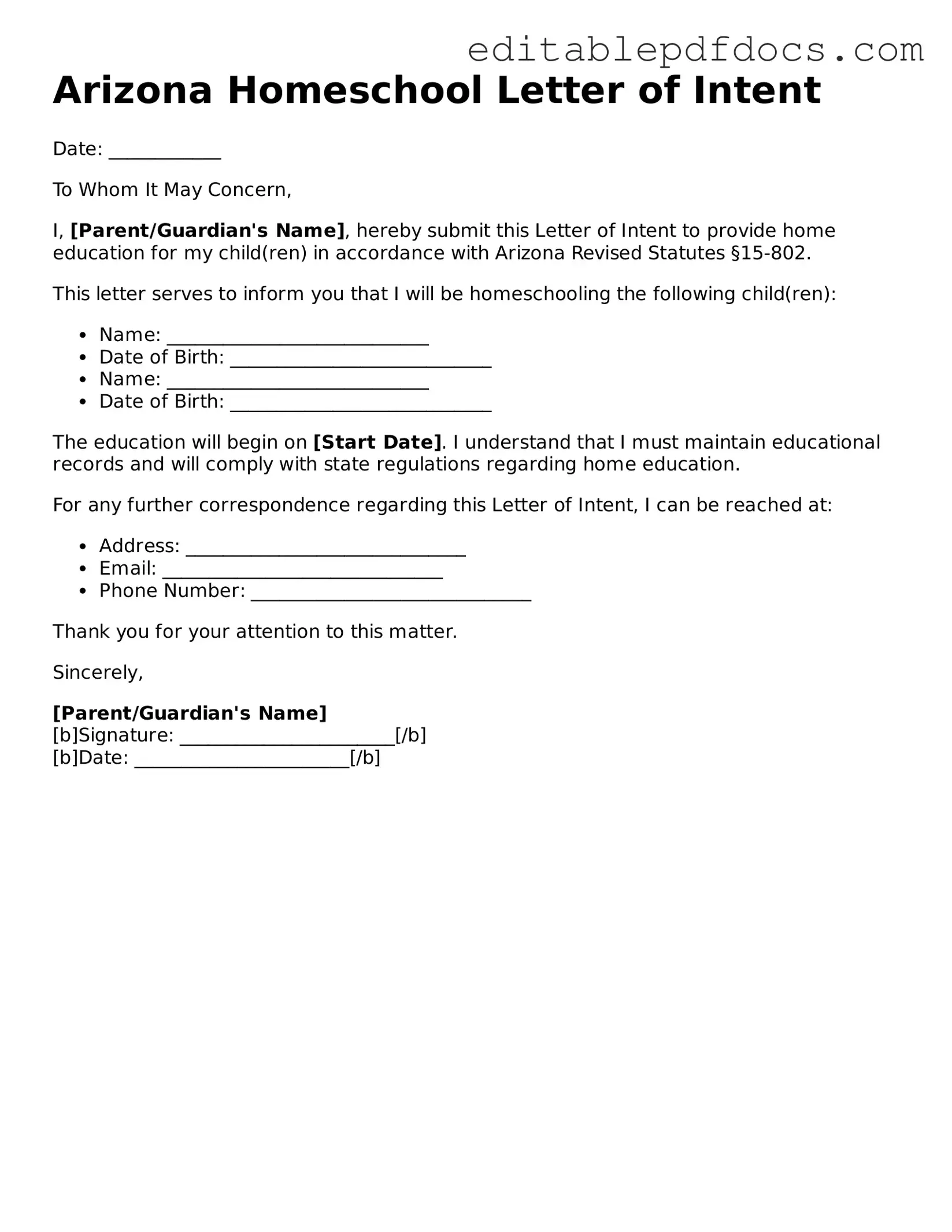Completing the Arizona Homeschool Letter of Intent form is a crucial step for families wishing to homeschool their children. However, several common mistakes can lead to delays or complications in the process. Understanding these pitfalls can help ensure that the form is filled out correctly and submitted without issues.
One frequent mistake is failing to provide accurate personal information. Parents must ensure that their names, addresses, and contact details are correct. An incorrect address can lead to miscommunication or even failure to receive important notices from the school district.
Another common error is neglecting to include all children who will be homeschooled. The form requires the names and birth dates of each child. Omitting a child can raise questions and potentially cause legal complications later on.
Some parents mistakenly submit the form without a clear educational plan. While the state does not require a detailed curriculum, it is essential to demonstrate an understanding of educational goals. A vague or absent plan may lead to scrutiny from local education authorities.
Additionally, individuals sometimes overlook the importance of signing and dating the form. A signature validates the intent to homeschool, and without it, the form is considered incomplete. It is a simple but critical step that should not be ignored.
Failure to meet submission deadlines is another common mistake. Arizona law requires the form to be submitted within a specific timeframe. Missing this deadline can result in legal repercussions or the inability to homeschool for that school year.
Some parents may also misunderstand the requirement for notification of changes. If there are any changes in address, educational plans, or the status of the children being homeschooled, these must be reported to the local school district promptly. Ignoring this requirement can lead to confusion and complications.
Lastly, individuals sometimes do not keep copies of the submitted form. Maintaining a record of all correspondence with the school district is essential for future reference. This practice can help resolve any disputes or questions that may arise later.
By being aware of these common mistakes, parents can better navigate the Arizona Homeschool Letter of Intent form process. Careful attention to detail and adherence to guidelines will facilitate a smoother homeschooling experience.
